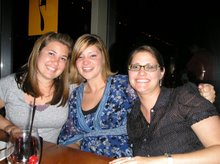ENTER THE FIRST TWO (semi) Official PARAGRAPHS
OF THE INTRODUCTION OF MY THESIS:
OF THE INTRODUCTION OF MY THESIS:
The never before seen Introduction (okay seen by two people ... my thesis adviser and my reader ... but that is it ... you people are the first! Hope you like it!):
“We cannot build our way to sustainability, we must conserve our way to it.” This is the declaration given by architect Carl Elefante, effectively calling both building and preservation professionals to arms in the battle for truly sustainable development. Donovan Rypkema, preservationist and economic development consultant, made the same connection as described in the preface, choosing Coke cans instead of newspapers to illustrate the concept of embodied energy. He reports that the demolition of one typical American downtown building – 25 feet wide and 120 feet deep – negates the environmental benefit of recycling 1,344,000 aluminum cans. Not only has a historic building been wasted, months of diligent recycling by an entire community has been thrown away. When placed in real and tangible terms the connections between historic preservation and sustainability are readily apparent. The academic and commercial literature, however, demonstrate a severe gap in articulating this convergence.
To be clear, the present global concern of climate change, compounded by the energy crisis in the United States, has spurred widespread interest in sustainability and ‘green’ building. Commercial literature abounds on the subject, as the building industry quickly attempts to address the impacts of the built environment on natural and urban ecologies. The literature addressing sustainability, however, focuses predominately on new construction, systematically ignoring the already existing building stock. Likewise, the literature for adaptive reuse of historic structures only vaguely asserts its natural alignment with the concept of sustainable building. The fact that these two movements are rarely discussed concurrently in the academic literature of architecture, planning, and preservation, exacerbates the need for an evaluation of the sustainable reuse of historic buildings.


















